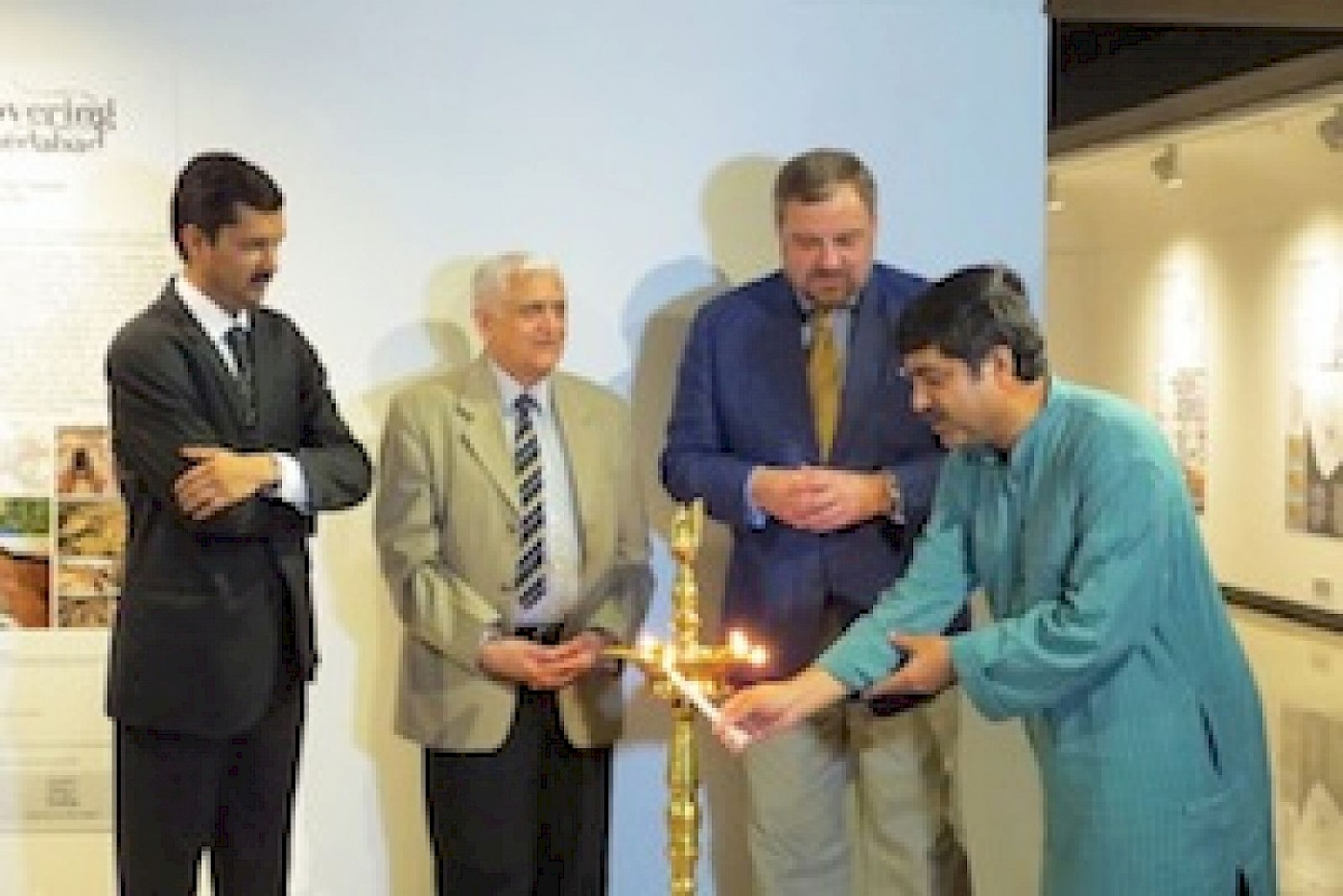Discovering Ahmedabad

A month-long exhibition on Ahmedabad was held at the Instituto Cervants, New Delhi. The city, a living museum founded in 1411 AD, has thrived for 6 centuries. With a surface area of 550 hectares and a population of 440,000, Ahmedabad has produced urban and architectural heritage that is exceptional by any standard of the world. The historic core of Ahmedabad has taken it to be nominated to the UNESCO tentative list of World Heritage Cities, a glory which no other Indian city can claim.
The celebrated monuments of the Walled City in Ahmedabad are famous and reveal profound traditions of historical Gujarati and Indian architecture. Established on the left bank of Sabarmati, the city has always amply displayed a mix of Islamic, Hindu and Jain architecture. The unique underground architectural marvels called step wells or vavs used to provide water to the arid region. The Sarkhej Roza, a tomb of a saint Ganj Baksh Khattu, is the finest specimen of Medieval Gujarati architecture. The various mosques, the Jain and the Swaminarayan temples also highlight the great building traditions of the region. Later, in the British era, Ahmedabad also acquired colonial buildings with arches, wooden truss roof and stone walls. In the modern age, the patronage of the rich and wealthy Amdavadis of architects from Europe had given the city a set of inimitable buildings by the likes of Le Corbusier and Louis Kahn.
The tradition of preserving heritage is reflected in the way the city was formed at the very beginning. A concept of balance defines the formation of the settlement, where water courses, landscape, animal husbandry and agriculture are given equal weightage. Its fort wall, and the fourteen city gates, made of bricks and veneered by stone, links the commercial hub of the town and its markets to the agricultural hinterland. Also, a cluster pattern of a neighbourhood, usually known as the pols, with wooden havelis and their beautiful wooden facades, brackets and carved windows, chabutaras and chowks still exhibit the organic lifestyle of its citizens. These pols had rainwater harvesting and were earthquake proof, a testimony to traditional Gujarati methods of construction.
Ahmedabad is also a hub of textile, known as the Manchester of India. The whole textile industry, uniquely indigenously financed, had created much of the success saga of Ahmedabad’s booming economy. In a way, the resounding success of this industry has also scripted a legacy of great wealthy, visionary institutional builders. A family legacy of patrons of art, education and industry in the Lalbhai, Sarabhai and Chinubhai Chimanlal families promoted great institutions like the Indian Institute of Management, Ahmedabad, National Institute of Design, the Ahmedabad Textile Industry’s Research Association and many more. The 21st century Ahmedabad is an urban centre developing harmonious relations between the spatial, the social and the environmental aspects of cities.
The 600 years of glorious existence of Ahmedabad is crystallized in the exhibition Annals of Reinvention, Discovering Ahmedabad, which was displayed at the Spanish Cultural Centre in India from July 17 to August 17, 2013. This exhibition was initially displayed in the EuroIndia City Summit organized in Valladolid named “Leveraging urban legacy for sustainable city development”. The summit also witnessed the presentation of a replica of a façade of a wooden Haveli to Casa de la India as a permanent gift by the citizens Ahmedabad.



